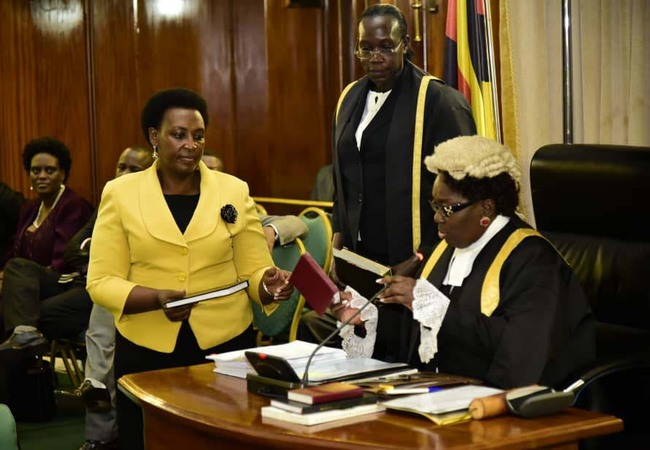Middle-income status for Uganda 'a collective effort'
According to Kamukama for the country to reach the middle income level status there is need for Ugandans to work with the government.
MIDDLE-INCOME STATUS
The newly appointed minister of economic monitoring Molly Kamukama has rallied Ugandans to work together with the government to achieve the lower-middle-income status before the end of the year 2020.
According to the National Development Plan (NDP) II, which is set to expire in June this year, the government anticipates to achieve a lower-middle-income status by 2020, progressing to an upper-middle-income status by 2032 and attaining the target of USD 9500 per capita in 2040.
However, according to Kamukama for the country to reach the middle-income level status, there is a need for Ugandans to work with the government to achieve the goal.
"We are still optimistic that we shall achieve middle-income status. However the public needs to engage the government whenever something is not moving right, by reporting government officials that are involved in corruption or diversion of public funds for service delivery," Kamukama said.

Molly Kamukama said there is a need to establish economic policies to ensure the growth of the private sector. (Courtesy photo)
In an interview with journalists shortly after her swearing-in ceremony as an ex-official parliament of Uganda, Kamukama said the government was on track in achieving the middle-income status, citing some of the progress registered in different sectors.
Describing the middle-income status as a process, the former Principal Private Secretary (PPS) to the President, said there is a need to establish economic policies to ensure the growth of the private sector.
"We need to understand that economic growth cannot happen in a single day. It is a process and we have to work together," Kamukama noted.
She noted that economic growth comes with increased employment opportunities and expansion of the GDP which is good for Uganda.
According to the World Bank, a lower-middle-income economy is defined as one with income per capita between USD 1006 (Shs 3.7 million) and USD 3955 (Shs 14.8 million).
Analysts, however, say Uganda will most likely not be able to meet its NDPII target of lower-middle-income status by 2020
This is attributed to the GDP per capita, which has not grown as expected partly due to a fast-growing population at a rate of 3 per cent per annum.
According to the State of Uganda Population report 2019, more than half of the population is younger than the age of 15.
This has translated into a high dependence ratio which places significant pressure on families which must spend scarce resources on their children's health, food and education rather than investment in profitable ventures that would increase the country's GDP growth rate and per capita income.
It puts the country at risk of not being able to achieve the plan's targets by 2020. Kamukama, however, said, with increased economic monitoring and addressing economic policy issues, the middle-income status can be achieved.
Kamukama, who has since declared her interest to run as Kazo district woman MP in 2021, was sworn in on Wednesday as an ex-official, at the Parliament of Uganda.